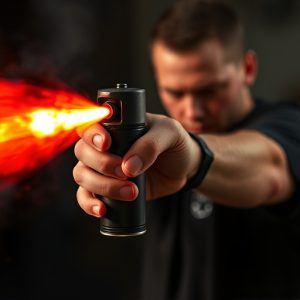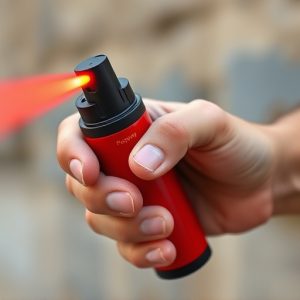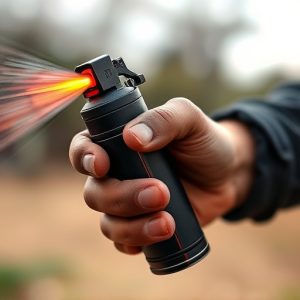Pepper Spray in Hot Climates: Storage, Use, and Crowd Control Strategies
In hot climates, effective crowd control with pepper spray relies on proper storage practices. Law e…….
In hot climates, effective crowd control with pepper spray relies on proper storage practices. Law enforcement agencies must store pepper spray in cool, dry locations with temperature control and ventilation to maintain potency. Best practices include using specialized containers, regular maintenance, inspection, and officer training for strategic deployment, ensuring safety, effectiveness, and minimal impact on bystanders during hot weather events.
In hot climates, police agencies often turn to pepper spray as a crowd control tool. However, the effectiveness and secure storage of this substance in warm regions pose unique challenges. This article explores understanding pepper spray in hot climates, delving into secure storage methods for optimal efficacy, and best practices for its responsible use during crowded events. Key considerations include environmental factors and strategic management to ensure public safety without compromising the integrity of the spray.
- Understanding Pepper Spray as a Crowd Control Tool in Hot Climates
- Challenges and Considerations for Secure Storage of Pepper Spray in Warm Regions
- Best Practices for Effective Use and Management During Crowded Events
Understanding Pepper Spray as a Crowd Control Tool in Hot Climates
In hot climates, effective crowd control methods are essential, and pepper spray has emerged as a significant tool in law enforcement’s arsenal. This non-lethal agent is particularly useful for managing large gatherings where temperatures can soar, making traditional control tactics more challenging. The unique properties of pepper spray in such environments come down to its storage and usage considerations.
Hot climate conditions require specific storage practices for pepper spray to maintain its potency. Extreme heat can compromise the integrity of the spray, reducing its effectiveness. Therefore, law enforcement agencies must ensure proper ventilation and temperature-controlled facilities for storage. Additionally, regular maintenance and inspection are crucial to guarantee the spray’s quality, especially when deployed in outdoor settings where temperatures fluctuate. Understanding these factors is key to maximizing the efficiency of pepper spray as a crowd control mechanism during hot weather conditions.
Challenges and Considerations for Secure Storage of Pepper Spray in Warm Regions
In hot climates, the secure storage of pepper spray presents unique challenges due to elevated temperatures and humidity levels. These environmental factors can significantly impact the integrity and effectiveness of the spray, making proper storage a critical consideration for law enforcement agencies. While pepper spray is designed to be robust, prolonged exposure to heat can cause degradation, reducing its potency and potentially compromising its performance when needed.
Agencies operating in warm regions must implement strict protocols to safeguard their stockpile. This includes storing pepper spray in cool, dry locations, utilizing temperature-controlled facilities, and employing specialized containers designed to withstand heat. Furthermore, regular rotation of stock and routine checks for spoilage are essential practices to ensure the product remains viable. By addressing these considerations, law enforcement can maintain a reliable supply of pepper spray, crucial for effective crowd control in challenging hot climate conditions.
Best Practices for Effective Use and Management During Crowded Events
In managing crowd control with pepper spray during crowded events, especially in hot climates, best practices should be followed to ensure effectiveness and safety. One key practice is proper storage: Pepper spray should be stored in cool, dry places, away from direct sunlight, to maintain its potency. This includes using specialized containers designed for heat and moisture protection, such as those with insulated linings or desiccant packets.
Additionally, officers must receive adequate training on the spray’s handling, including how to check expiration dates and perform routine maintenance checks. During events, they should employ strategic deployment techniques, aiming for low-wind conditions to maximize the spray’s impact on the target while minimizing exposure to bystanders. Regular debriefings and clear communication among officers can also help manage expectations and prevent misuse or accidental discharge.
In light of the above discussions, it’s clear that effective crowd control in hot climates requires a strategic approach to pepper spray management. By understanding the unique challenges of hot climate pepper spray storage and implementing best practices for its use, law enforcement can ensure public safety during crowded events. These measures are vital to navigating the complexities of warm regions, demonstrating a testament to the importance of securing and utilizing this tool appropriately.


